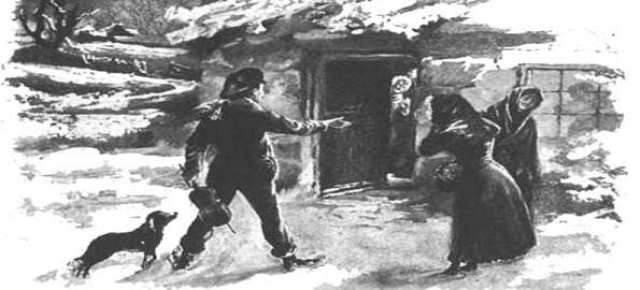The Scottish New Year Celebration
Happy New Year! As the holidays wind down and we nurse those hangovers from our New Year festivities, it’s comforting to know we’re in good company as we reach for the bottle of aspirin. People worldwide, no matter what race or religion, celebrate the new year in some form. There are many customs and traditions practiced today whose roots stretch back centuries. And yes, most nursed a hangover after the celebrations back then as we do today.
Since the Keiths and Graemes were Scottish, let’s take a look at the traditions in Scotland that followed those fast-talking, hard-drinking Scotsmen from their homeland to America.
The New Year, or “Hogmanay” in Scotland, is a festive, boisterous three-day extravaganza that is hundreds of years old. It was, and still is, the biggest celebration of the year, beginning on New Year’s Eve and ending on January 2. Even bigger than Christmas? Yes! It wasn’t until 1958 that Christmas be-came a public holiday in Scotland. So it was the New Year celebration, not Christmas, which became the best reason to imbibe that all-popular scotch whiskey and get the party going.
Hogmanay has its origins in Vi-king culture. The Vikings had a large celebration for the winter solstice and when they invaded countries, Scotland being one of them, they brought the party with them. Scots thought that a grand reason
to break out the scotch and join in the merriment. Eventually, the celebration moved to mark the new year instead of the solstice.
The Scottish New Year gala began on December 31 with a cleaning of the house before Hogmanay arrived. As night fell, children would go from house to house begging. The sad part is that in those days, there were no Hershey Bars, Skittles or Cheetos available so they had to be content asking for bread and cheese. This, by the way, is one version of how the word “Hogmanay” came to be. The offering from the neighbors was called “nog money,” and etymological evolution and the Scot-tish brogue eventually labeled the New Year celebration “Hogmanay.”
“First Footing” was a highlight of Hogmanay. The first person to enter a house after midnight brought gifts such as food or coal. Ideally, it would be a tall, dark and handsome man, who was said to bring good luck (I’ll answer the door, thank you!). However, if a small, blonde woman entered first, the household’s luck and for-tune were doomed (Someone else get the door, please!).
As friends and family swelled a Scottish home to the bursting point, all joined in singing Robert Burns’ “Auld Lang Syne” while linking arms. Of course, by this time, with the scotch flowing, maybe the practice of linking arms was to hold your friend in an up-right position. Who am I to judge?
Hogmanay is still a fantastic celebration in Scotland. In Edinburgh, it begins with a torchlight parade, followed by fireworks and many performances by numerous musicians, similar to how we party here in the States on New Year’s Eve. Other cities have their traditions as well, ranging from entertainment to (unsurprisingly) drinking enormous amounts of scotch, followed by a dip in an icy sea to raise money for charity. Or to sober up. It’s anyone’s guess.
So let’s raise our glass of scotch whiskey and wish one and all a Happy New Year with all the best to you in 2017. Or, as Governor Keith or Dr. Graeme would have said in the old Gaelic, Scottish brogue, “Bliadhna Mhath Ur.”

